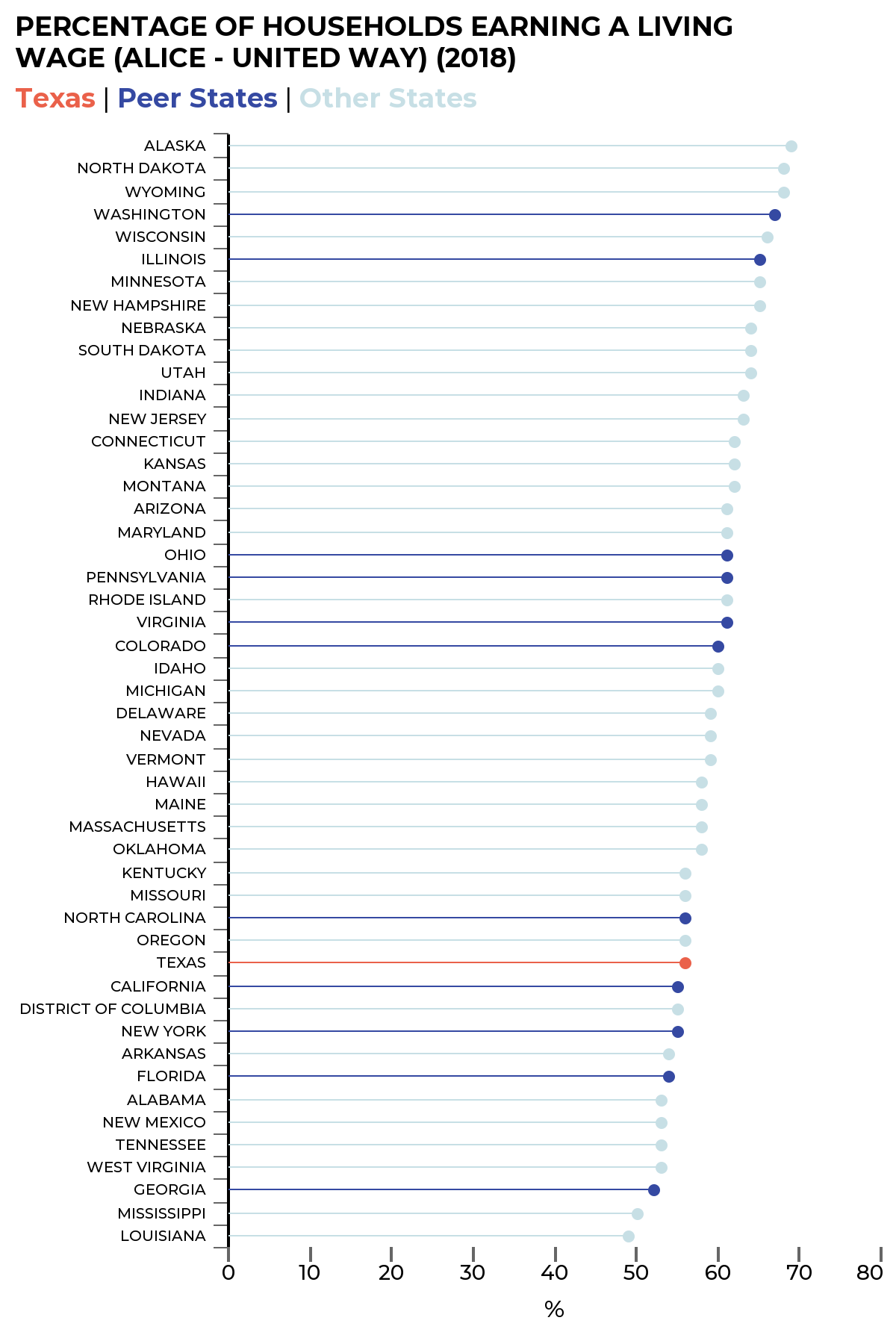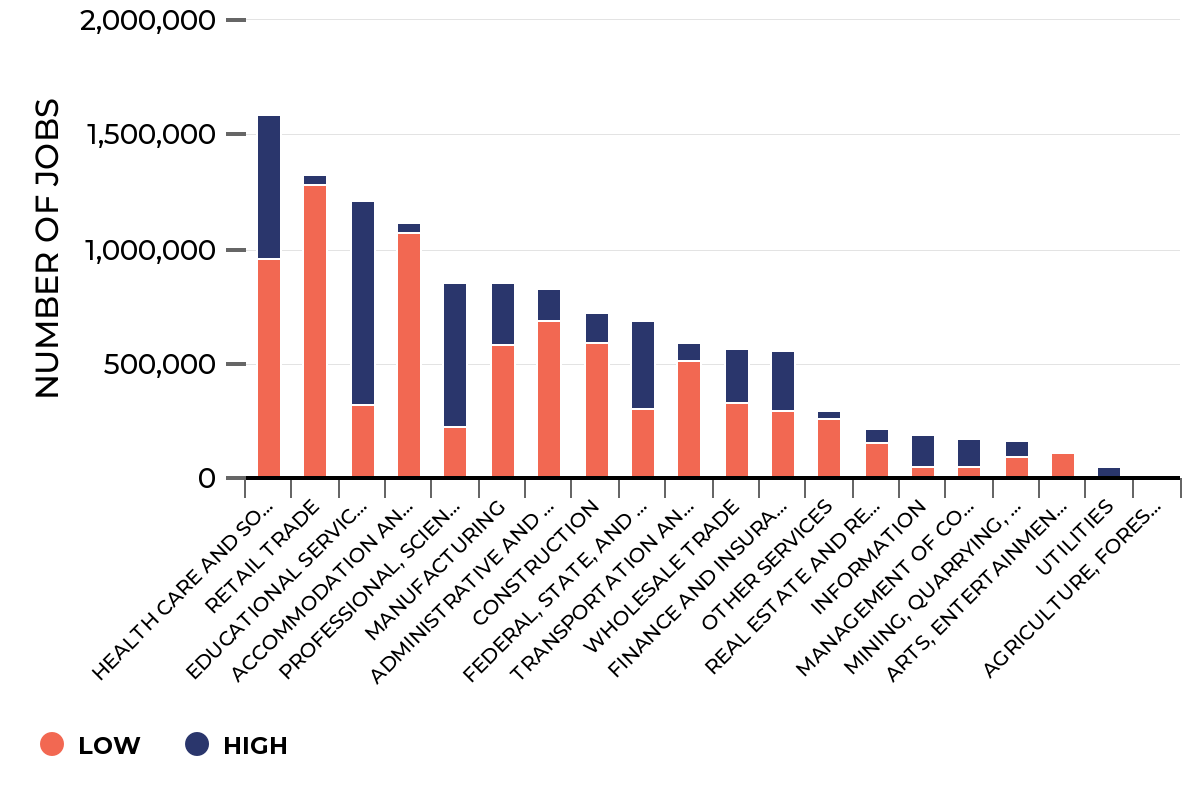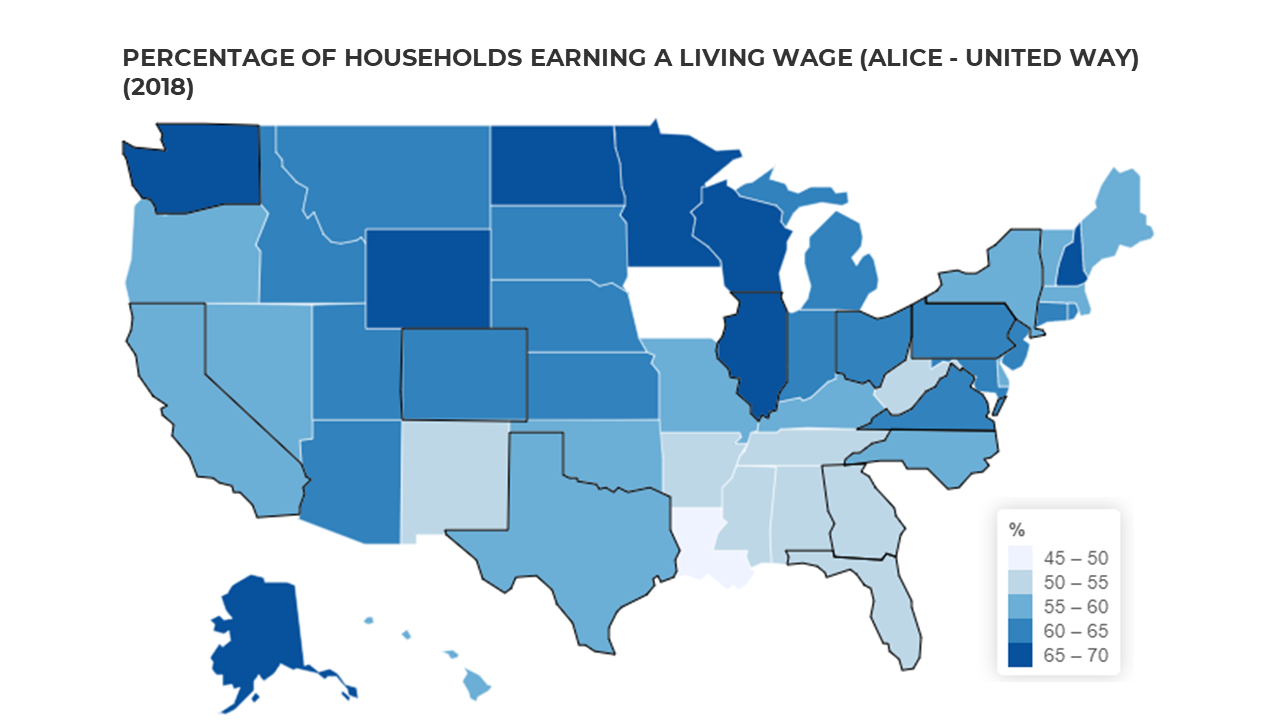Better job opportunities for all Texans: Strategic Framework
Our look at better job opportunities for all Texans is part of our blog series for Texas 2036’s Strategic Framework, which provides in-depth, cross-cutting data to inform key decisions about the most significant issues facing the state.
 Texas has experienced Gross Domestic Product growth in nine of the last 10 years, with the only exception being in 2020 during the pandemic. This is great news for our business community and the state as a whole.
Texas has experienced Gross Domestic Product growth in nine of the last 10 years, with the only exception being in 2020 during the pandemic. This is great news for our business community and the state as a whole.
However, this prosperity is not shared by all Texans. The primary metric to measure Goal No. 5 in Texas 2036’s Strategic Framework is the percentage of households that earn a living wage. Texas is tied with North Carolina at seventh among our 12 peer states in providing living-wage jobs for its residents.
What do we mean by earning a “living wage?”
We recognize that although a household’s income is above the federal poverty level it does not mean they’re fully able to support themselves and their family members without relying on government assistance programs. To measure living wage, we rely on the United Way’s Asset Limited, Income Constrained, Employed, or ALICE, index to determine what a living wage is in our state.
An income just above the ALICE threshold is the bare minimum cost of household basics necessary to live and work in the modern economy including housing, child care, food, transportation, technology and health care, plus taxes and a contingency fund equal to 10% of the household budget. For a family of four with two adults and two children in Texas, this means a household maintains income of at least $54,852.

Just 56% of households in Texas are above the ALICE threshold.
Peer states, including Colorado, Illinois, Ohio, Pennsylvania, Virginia and Washington, all rank ahead of Texas in providing living-wage jobs for their residents. There’s room for improvement.

For Texas 2036, we gear many of our education and workforce efforts toward this goal through monitoring our current levels of living-wage jobs and pointing toward a better future.
Texas 2036 strongly supported HB 3767 (2021-R), which establishes the Tri-Agency Commission and requires the three agencies—Texas Education Agency, Texas Higher Education Coordinating Board and Texas Workforce Commission—to determine a self-sustaining wage level for each county in Texas. The Commission also uses this definition to create goals for living-wage attainment for career education and training programs.
For more resources, check out the Aim Hire Texas Regional Workforce Data Tool, which allows users to see the living-wage jobs in their area projected to have the most openings into the future and what industries in each region have the most living-wage jobs.
